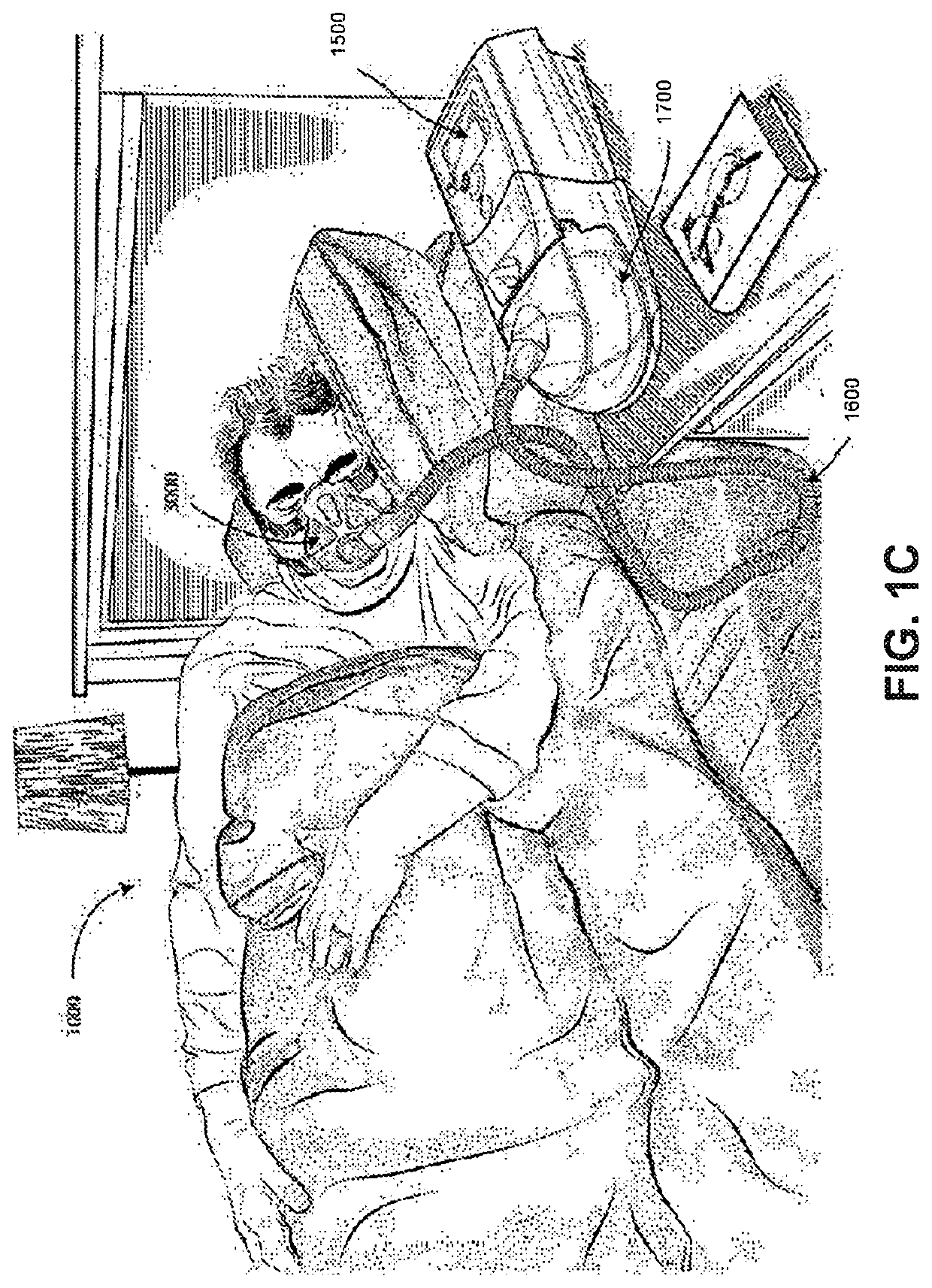Custom patient interface and methods for making same
a patient interface and interface technology, applied in the field of medical devices or utensils, can solve the problems of csr harm, cardiovascular disease and brain damage, excessive daytime somnolence, etc., and achieve the effects of improving comfort, cost, efficacy, and ease of us
- Summary
- Abstract
- Description
- Claims
- Application Information
AI Technical Summary
Benefits of technology
Problems solved by technology
Method used
Image
Examples
second embodiment
[0622]In a second embodiment shown in FIG. 16H, patient interface 16400 includes conduit 16401 connected to sealing element 16402, which in turn is attached to a headgear 16403 having a first portion 16404 and a second portion 16406. As shown, first portion 16404 and second portion 16406 may be formed of different materials. Specifically, first portion 16404 and second portion 16406 may be formed of materials have different material properties. For example, first portion 16404 disposed around the back of the patient's head may be formed of a substantially non-elastic material (e.g., less elastic than second portion 16406), while second portion 16406 disposed over the cheeks and extending to sealing element 16402 may be formed of an elastic material, that is more elastic than the first portion 16404. Alternatively, first portion 16404 may be formed of a sticky or adhering material that does not easily slide on or against the patient's skin while second portion 16406 may be formed of ...
third embodiment
[0624]In a third embodiment shown in FIG. 16I, patient interface 16410 includes conduit 16411 connected to sealing element 16412, which in turn is attached to a headgear 16413 having a first portion 16414 (e.g., crown strap) and a second portion 16416 (e.g., side straps). The second portion 16416 has an elastic inner layer 16417a that contacts the patient's skin and has more elasticity than the first portion 16414. The first portion 16414 may be relatively inelastic and unable to stretch, for example, made of a neoprene material. As shown, first portion 16414 and second portion 16416 may be formed, second portion 16416 having a double layer configuration of layers 16417a,16417b. The inner layer 16417a (e.g., patient contacting layer) of the second portion 16406 is a material that is rigid in tension and relatively collapsible in compression, for example, a ribbon. The side strap 16416 is length adjustable via a buckle 16419. Reducing the length of side strap 16416 increases the tens...
fourth embodiment
[0625]In a fourth embodiment shown in FIG. 16J, patient interface 16420 includes conduit 16421 connected to sealing element 16422, which is turn is attached to a headgear 16423 having a first portion 16424, a second portion 16426 and a wireform 16428 extending through second portion 16426 and coupling first portion 16424 to sealing element 16422. Second portion 16426, which may be in the form of a cheek pillow is configured to traverse along (e.g., slides back and forth) wireform 16428 such as by gliding (e.g., a headgear slide) so that facial friction against second portion 16426 does not translate to movement of sealing element 16422. In one example, the second portion 16426 is slidable between the patient's ear and the patient's upper lip. In other words, the second portion 16426 can slide between the distal ends of the wireform 16428. As shown, wireform 16428 includes an upper wire and a lower wire, although it will be understood that wireform 16428 may include only a single wir...
PUM
 Login to View More
Login to View More Abstract
Description
Claims
Application Information
 Login to View More
Login to View More - R&D
- Intellectual Property
- Life Sciences
- Materials
- Tech Scout
- Unparalleled Data Quality
- Higher Quality Content
- 60% Fewer Hallucinations
Browse by: Latest US Patents, China's latest patents, Technical Efficacy Thesaurus, Application Domain, Technology Topic, Popular Technical Reports.
© 2025 PatSnap. All rights reserved.Legal|Privacy policy|Modern Slavery Act Transparency Statement|Sitemap|About US| Contact US: help@patsnap.com



